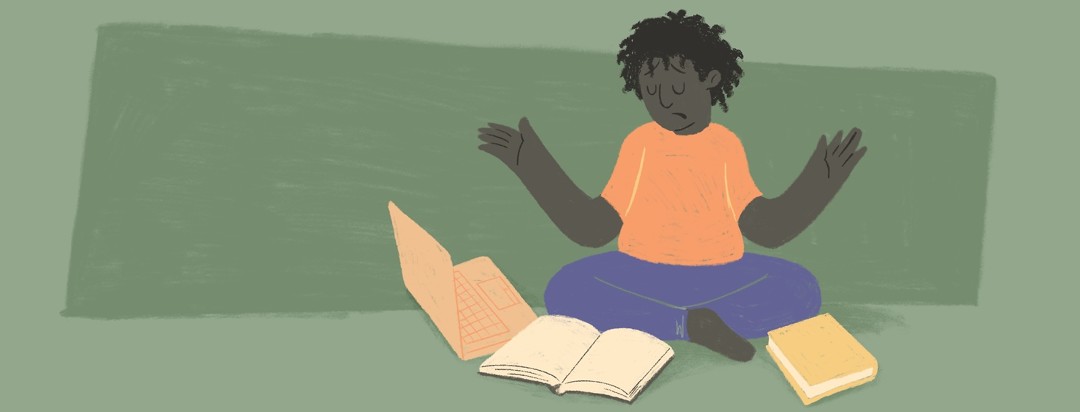What a New Cluster Headache Patient Needs to Know about Treatments
Cluster headache attacks are a different kind of beast than migraine disease and other headache disorders. The sudden onset and clock-like nature make you afraid to fall asleep, take a nap, and you subconsciously watch the clock, knowing another attack is minutes away.
If you were recently diagnosed, you might be just beginning to understand how this confusing neurological disorder works.
The basics of cluster headaches
So, what are cluster headaches? Cluster headache is a form of trigeminal autonomic cephalalgia and is one of the rarer primary headache disorders, affecting one out of a thousand people worldwide.
Cluster headaches can be episodic or chronic, and the attacks come on quickly and peak within five minutes. The immense, icepick stabbing pain is unrelenting for up to 3 hours at a time (rarely, longer) and comes back several times a day, often at the same time of day.
It’s unknown what causes the “beast” to unleash but it has to do with your circadian rhythms, which is why you’ll typically get an attack when you reach the REM sleep stage and also why some patients could nearly set their watch by the timing of each attack. Episodic “clusterheads” are more likely to go into a cycle around the spring and fall equinoxes and chronics go into high cycle during these periods too.
Cluster headache and the pain scale
The immeasurable pain has driven many cluster patients to contemplate or attempt self harm during attacks, which was quantified for the first time in 2017 in the largest cluster headache survey ever completed, where patients shared shocking details about the condition.1 The 2,270 patients involved rated a cluster headache attack 9.65/10 on the pain scale compared to other medical concerns, including:1
- Childbirth (7.15/10)
- Pancreatitis (7.63/10)
- Shingles (4.58/10)
- Migraine (5.55)
- Gunshot wound (6.51/10)
- Kidney stones (6.58/10)
Understanding treatment options
Opioids won’t touch your pain and it’s no secret they’re highly addictive. That handy Excedrin, Advil, or Ibuprofen won’t do a thing either. The best treatment for an attack is high-flow oxygen, and for medications, you need a fast-acting prescription because of how quickly an attack comes on. Oral medications take up to two hours to kick in, which means the attack may be gone by the time the drug takes effect. Nasal treatments such as Ketamine can work well for some patients. Injectable sumatriptan seems to be the most effective abortive medication for cluster headache because it offers relief within minutes.
Your insurance and doctor may try to get you to “fail first,” meaning they want you to try the oral, then nasal, before giving you the recommended treatment to prove that the cheaper options don’t work. It’s an exhausting battle, but one you have to fight because just one minute of the hot poker behind your eye and temple is enough to drive you insane.
You can learn more about your medical treatment options in the 2018 AHS guidelines for cluster headache treatments.
The struggle of getting oxygen
While getting the right prescriptions is tough, getting your script for 100 percent oxygen is even harder. Why? Because despite dozens of research studies and around 90 years of treatment history, the Centers for Medicare & Medicaid Services (CMS) through the National Institutes of Health (NIH) refuse to list oxygen as a cluster headache treatment option, which means you’ll likely be paying out of pocket for your tank, regulator, and mask.
When it comes to aborting attacks with high-flow oxygen, these are the fast facts you must know to get relief:
Editorial note: Please always confirm oxygen treatment guidelines with your healthcare professional.
- Your prescription must clearly state 100% oxygen therapy for the treatment of cluster headache at 15 liters per minute (lpm) through a non-rebreather mask.
- The oxygen company may give you trouble when filling the script, and many patients find it easier to buy their own oxygen regulator (some go up to 25 lpm).
- You will need 1-2 large tanks (about three or four feet tall) and multiple smaller tanks, and each has a specific regulator.
- There’s a non-rebreather mask (i.e., no holes near the nose or mouth) specifically made for cluster headaches called the O2ptimask™ or ClusterO2 Kit.
- There’s a specific breathing method you must use to abort an attack quickly (within 15 minutes), which involves a complete exhale, quick, short breaths in, and fully exhale. If you feel slightly dizzy, you’re doing it correctly.
- Once the attack has subsided, switch to a nasal cannula (provided by the O2 company), knock the flow rate down to 5lpm, and breathe normally for 20 minutes to lengthen the time between attacks. (Learn more about O2 for cluster headaches.)
Research all treatments—including alternative options
Some of the most effective treatments for cluster headaches are bizarre. For example, magic mushrooms and LSD have and continue to be studied for their incredible effect at preventing cluster headaches and aborting attacks for some. The cluster headache patient community is filled with countless stories of people who tried every medication (even surgery) out there with no relief and then found incredible results with psychedelics. There’s an ongoing clinical trial at Yale University right now, and I encourage all new cluster headache patients to research their options.
This is the tip of the iceberg for treatments. There are multiple preventative treatment options, including Emgality, the first-ever FDA-approved medication for episodic cluster headaches.
A lot of cluster patients report thinking suicidal thoughts during attacks, but there are also others who think about or attempt to take their lives because they don’t see any hope in finding relief. There’s an amazing patient community of clusterheads who are available day and night to help others survive the next attack and find ways to get pain relief.

Join the conversation